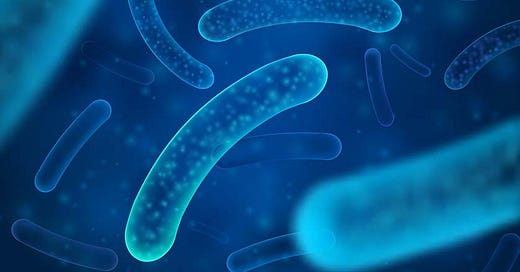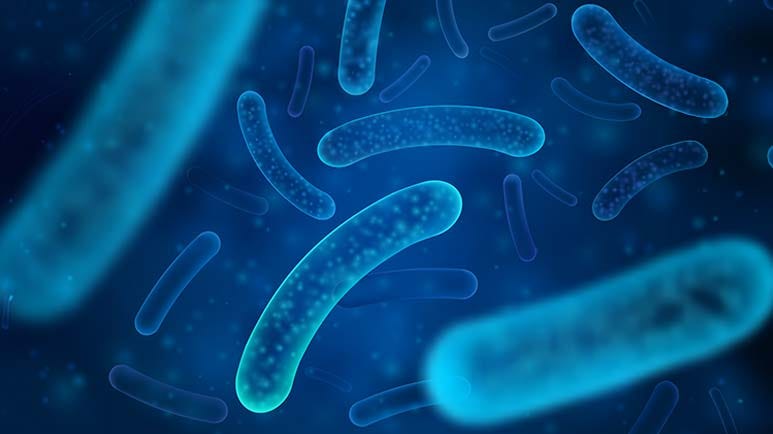Why This CO2-Making Probiotic Is a Superstar
These overlooked 'fizzy foods' contain a 'superstar strain' that prevents the growth of harmful bacteria that can make you sick.
STORY AT-A-GLANCE
Carbon dioxide (CO2) is a driver of mitochondrial energy production, and improves the delivery of oxygen into your cells. It also protects against the harmful effects of lipid peroxidation
CO2 is also part of the “magic” that makes fermented foods so good for you. During lacto-fermentation, certain lactic acid-producing bacteria break down sugars into acids and CO2. The CO2 is what creates the fizziness in fermented foods
CO2-producing bacteria include Lactobacillus brevis, L. reuteri and L. fermentum
Like L. brevis, L. reuteri is well-known for its ability to promote gut health. L. reuteri also upregulates systemic immune responses, thereby promoting wound healing, mental health, metabolism and myoskeletal maintenance, and has been shown to have “antiaging” effects
All Lactobacillus strains also inhibit the growth of gram-negative endotoxin-producing bacteria through competitive inhibition. Endotoxin is one of several factors that destroy mitochondrial function, promotes glycolysis and, ultimately, cancer metabolism
Over the past few months, I’ve published several articles discussing the remarkable health benefits of carbon dioxide (CO2), which is produced in the Krebs cycle in your mitochondria. CO2 is a driver of mitochondrial energy production, and improves the delivery of oxygen into your cells. It also protects against the harmful effects of lipid peroxidation.
It’s rather surprising that the benefits of CO2 have become forgotten considering its historical use. Asian cultures, for example, have a long history of using carbonated water for its health benefits.
The Romans recommended taking baths in naturally carbonated water for all kinds of ailments but especially arthritis, infertility and psychiatric ailments, and this practice extended well into the Middle Ages when monks prescribed it. To this day many visit natural hot springs, and the likely benefit in many of these springs is the CO2 content of the water.
In the 20th century, Russian scientists did loads of research on CO2, and to this day, many Russian clinics offer CO2 baths and other CO2 treatments. There’s even a suit that can be filled up with CO2, which then diffuses into your tissues. You’ll start feeling hot very rapidly and this is a sign of vasodilation, which is one of the cardiovascular effects of CO2.
It’s been shown that CO2 can, over the long term, reverse arterial calcification, as well as other kinds of damage caused by the aging process. In fact, while this may come as a shock to most people, I believe CO2 is one of the most effective longevity interventions available. It may also be a crucial component of cancer prevention and treatment, as discussed in one of my interviews with Georgi Dinkov.
Certain Bacteria Produce CO2 During Fermentation
CO2 is also part of the “magic” that makes fermented foods so good for you. During lacto-fermentation, certain lactic acid-producing bacteria break down sugars into acids, alcohol and CO2 (among other things). CO2 is what creates the fizziness in fermented foods like sauerkraut or pickles, while the acids create an environment with low pH that is free of oxygen, thereby preventing spoilage.
“During lacto-fermentation, certain lactic acid-producing bacteria break down sugars into acids and CO2. The CO2 is what creates the fizziness in fermented foods.”
Lactic acid bacteria, such as Lactobacillus brevis — one of 16 Lactobacillaceae strains — also produce antimicrobial compounds such as bacteriocins that prevent the growth of harmful bacteria that can make you sick. The Conversation recently highlighted Lactobacillus brevis, referring to it as a “fermentation superstar” for all these reasons.1
Aside from fermented veggies, L. brevis is also found in raw milk, wine, sourdough bread and certain cheeses.2 It’s known to promote digestive health in general, and can help prevent and treat gastric ulcers by inhibiting Helicobacter pylori. Other health benefits of L. brevis include improved cognitive function and immune function.3
Health Benefits of L. Reuteri
Two other strains in the Lactobacillaceae family — L. reuteri4 and L. fermentum5 — are also CO2 producers. Like L. brevis, L. reuteri is well-known for its ability to promote gut health. It also upregulates systemic immune responses, thereby promoting wound healing, mental health, metabolism and myoskeletal maintenance,6 and has been shown to have “anti-aging” effects.
Research7 published in 2013 found that aged mice fed a commercially-available L. reuteri-containing probiotic yogurt experienced skin and fur changes that mimic the “peak health and reproductive fitness characteristic of much younger animals,” including a thicker dermis, and thicker, shinier, more lustrous coats. In contrast, age-matched controls that ate chow alone had dull fur and suffered from occasional alopecia and dermatitis.
The researchers pointed out that healthy-looking fur (and hair in humans) tend to be a sign of good fertility, and is a recognized sign of health in general:
“Taken together these facts lead us to hypothesize that probiotics may play a role in effecting the ‘glow of health’ associated with youth and reproductive fitness. Further, we postulated that feeding of probiotic organisms recapitulates these beneficial integumentary effects characteristic of youth within aged adult animals.”
Other documented health benefits of L. reuteri include:8
Antimicrobial effects
Immune-boosting and immune-regulating effects
Strengthening the intestinal barrier, thereby decreasing microbial translocation from the gut lumen to other tissues. As a result, a wide variety of diseases rooted in systemic inflammation may be ameliorated
Lactobacillus Inhibits Endotoxin Production
All Lactobacillus strains also inhibit the growth of gram-negative endotoxin-producing bacteria through competitive inhibition,9 and this is crucial for health in several respects.
Endotoxin, also known as lipopolysaccharide (LPS), is produced by gram-negative bacteria in your gut. As explained in several previous articles, endotoxin is one of several factors that destroy mitochondrial function, promotes glycolysis and, ultimately, cancer metabolism.
When complex carbs aren’t digested in your stomach, they travel down to the intestine where they feed these gram-negative bacteria, and as the bacteria grow, multiply and die, they release LPS, which can result in leaky gut, allergic reactions, organ dysfunction and even sepsis.
Endotoxin also catalyzes a series of metabolic reactions that convert tryptophan in your gut to serotonin, which at high levels is not good for your health. You do not want high levels of serotonin because it’s an antimetabolite, meaning it suppresses your body's ability to create energy in your mitochondria in the electron transport chain, so you become tired and fatigued, your metabolic rate slows and you gain weight.
To address this vicious cycle, you need to heal and seal your gut. Beneficial bacteria such as Bifidobacteria and Lactobacillus, and beneficial yeast like Saccharomyces boulardii, can all help rein in the endotoxin production through competitive inhibition.
Probiotics such as these also strengthen your intestinal barrier (the “seal” part of “heal and seal your gut”) by increasing mucus production, stimulating release of antimicrobial peptides, and increasing tight junction integrity.10
At the same time, you also want to strictly limit your intake of refined sugar and most starches, as these types of carbs tend to feed the bacteria that produce endotoxin, especially if your microbiome is less than optimal.
How to Feed the Lactobacillus in Your Gut
The greater the diversity of your gut microbiome, the more likely you are to be able to maintain overall good health as the beneficial bacteria will maintain homeostasis and make sure opportunistic pathogens (commensal bacteria) won’t get the upper hand.
There are three primary ways to increase the number of Lactobacilli and other beneficial bacteria in your gut:11
Consume fermented foods such as unpasteurized yogurt or kefir made from raw milk, sour cream and fermented vegetables such as sauerkraut.
Take a high-quality probiotic supplement that contains one or more strains.
Eat foods that promote proliferation of Lactobacilli, such as dietary fiber, Konjac flour, wheat bran, buckwheat, barley, apples, walnuts, artichoke and chokeberry.
Disclaimer: The entire contents of this website are based upon the opinions of Dr. Mercola, unless otherwise noted. Individual articles are based upon the opinions of the respective author, who retains copyright as marked.
The information on this website is not intended to replace a one-on-one relationship with a qualified health care professional and is not intended as medical advice. It is intended as a sharing of knowledge and information from the research and experience of Dr. Mercola and his community. Dr. Mercola encourages you to make your own health care decisions based upon your research and in partnership with a qualified health care professional. The subscription fee being requested is for access to the articles and information posted on this site, and is not being paid for any individual medical advice.
If you are pregnant, nursing, taking medication, or have a medical condition, consult your health care professional before using products based on this content.







Highly relevant report. The decline in abundance of L. reuteri in humans in recent decades correlates with an increase in the incidence of inflammatory diseases. Modulation of the gut microbiota by ingesting probiotic strains of L. reuteri could be a promising preventive and therapeutic approach against many diseases and disorders.----
1) Research supporting the application of various strains of L. reuteri in the treatment of common diseases of the digestive system, including infantile colic, diarrhea, constipation, functional abdominal pain, Helicobacter pylori infection, inflammatory bowel disease, diverticulitis, colorectal cancer, and liver diseases.------
2) L. reutero can control body weight and obesity, improve insulin sensitivity and glucose homeostasis, increase intestinal integrity and immunomodulation, and attenuate liver disorders. ----
3) L. reuteri is capable of inhibiting the colonization of pathogenic microbes and remodeling the composition of the commensal microbiota in the host.-----
4) L. reuteri may benefit the host's immune system. Reduce the production of proinflammatory cytokines while promoting the development and function of regulatory T cells. ----
5) Colonization of L. reuteri can reduce microbial translocation from the intestinal lumen to tissues, preventing inflammation. ----
6) L. reuteri decreases intestinal pH and increases short chain fatty acids, such as butyric acid, which is essential for intestinal health.----
7) L-reuteri improves tolerance in your diet, promoting the absorption of nutrients, strengthening your defenses.----
8) Lactobacillus reuteri prevents post-antibiotic bone loss by reducing intestinal dysbiosis and preventing barrier disruption----
9) The use of L. reuteri as an adjunct to non-surgical periodontal treatment can produce significantly better clinical results.-----
L. reuteri strain may help colic symptoms, improve digestion, and reduce the risk of premature birth. The probiotic L. reuteri can have a positive impact on gastrointestinal function and relieve colic symptoms in three ways; strengthening the mucosal barrier, increasing gastric motility and balancing the intestinal microbiota. Additionally, L. reuteri is the only probiotic that has been repeatedly shown in studies to reduce crying time in babies with colic.
https://www.frontiersin.org/articles/10.3389/fmicb.2018.00757/full (2018)----
https://www.sciencedirect.com/science/article/pii/S0965229921001229 (2021)----
https://asbmr.onlinelibrary.wiley.com/doi/full/10.1002/jbmr.3635 (2019)----
https://pubs.rsc.org/en/content/articlelanding/2021/fo/d1fo02517a/unauth (2021)---
https://www.mdpi.com/2076-2607/10/3/522 (2022)----
https://www.ncbi.nlm.nih.gov/pmc/articles/PMC10471993/ (2023)---
https://asbmr.onlinelibrary.wiley.com/doi/full/10.1002/jbm4.10805 (2023)----
https://www.ncbi.nlm.nih.gov/pmc/articles/PMC10613642/ (2023)---
https://www.sciencedirect.com/science/article/pii/S175646462300405X (2023)---
https://www.mdpi.com/2076-2607/11/6/1449 (2023)---
https://onlinelibrary.wiley.com/doi/full/10.1111/hel.13017 (2023)---
https://bmcgastroenterol.biomedcentral.com/articles/10.1186/s12876-023-02778-4 (2023)---